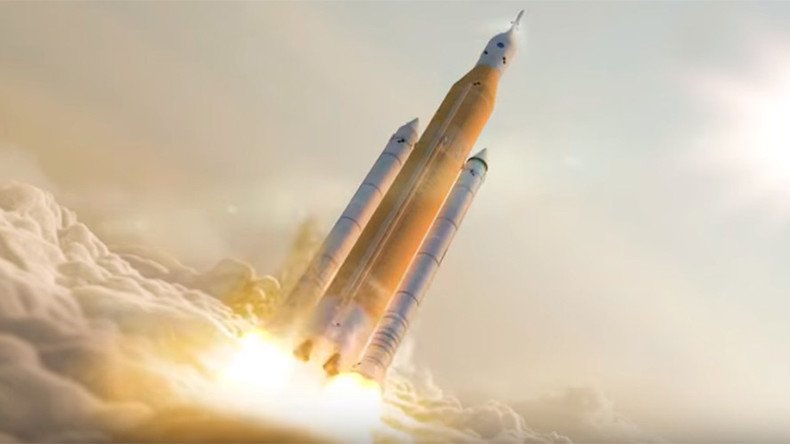NASA building very own ‘Big F**king Rocket’ to rival SpaceX (VIDEO)

Not to be undone by Elon Musk and SpaceX, NASA boffins are busy developing their own huge rocket they hope will soon be capable of bringing humans and massive amounts of cargo to the Red Planet and beyond.
Though Space Launch System 1 is still in the development stage, the good people at NASA have produced a fancy CGI video of what SLS-1 will look like.
The huge rocket, which stands taller than New York’s iconic Statue of Liberty, will be the “biggest, most capable rocket ever built” and will be able to produce nearly 9 million lb of thrust, which is more than 31 Boeing 747 jets combined.
Generating that much power will enable SLS-1 to deliver 154,000lb (70,000kg) of cargo, the equivalent of 70 fully loaded 1-ton pickup trucks or, if you prefer, 12 fully grown elephants, into orbit and beyond.
Pretty handy if us humans want to colonise Mars ourselves and, if we really want, we can leave the cargo at home and populate the Red Planet with a herd of elephants, though it’s questionable how useful that would be.
#NASA’s newest #Mars rover will have 23 ‘eyes’ to capture colored 3D images of Red Planet (PHOTO) https://t.co/8rx5j8CB76pic.twitter.com/7zOgUEIA1B
— RT (@RT_com) November 1, 2017
The inaugural launch of SLS-1 isn’t due until 2020 and for safety reasons NASA won’t be sending astronauts first, but once it’s deemed ready, four astronauts should be able to hop inside an Orion spacecraft and head off out into the stars.
“While the review of the possible manufacturing and production schedule risks indicate a launch date of June 2020, the agency is managing to December 2019,” NASA Administrator Robert Lightfoot said.
“Since several of the key risks identified have not been actually realized, we are able to put in place mitigation strategies for those risks to protect the December 2019 date.”
SLS-1 isn’t the only such craft currently in development. In September Elon Musk unveiled his latest ambitious for further space travel with news that SpaceX is working on an aptly-titled “Big F*cking Rocket (BFR),” that Musk hopes will soon bring humans to Mars.
He also claims that BFR will be able to bring passengers “anywhere on Earth in under an hour,” essentially making any city accessible to the weekend traveler.
#ElonMusk introduced his new 'BFR' or 'Big F*cking Rocket' that can get you 'anywhere on Earth in under an hour' https://t.co/GqjOgsJRKFpic.twitter.com/jXAPzImgOu
— RT (@RT_com) September 30, 2017












